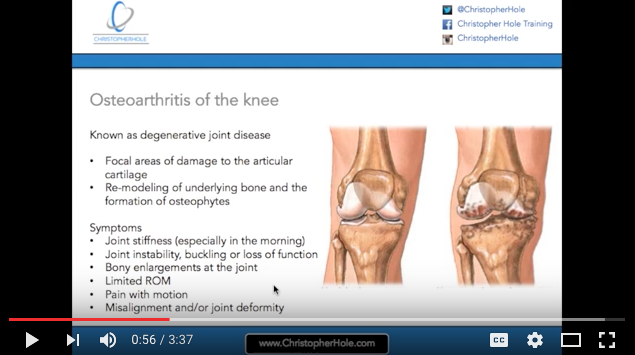
What is osteoarthritis of the knee?
Osteoarthritis is a form of arthritis, which is a long-term and crippling disease caused by the inflammation of joint that results in pain, sweeping, stiffness and limited movement. There are 2 common forms are;
- Osteoarthritis
- Rheumatoid Arthritis
Osteoarthritis also comes in 2 forms;
- Primary
- Secondary
Primary osteoarthritis is linked with the normal wear and tear of a joint that comes with ageing. Secondary Osteoarthritis is linked to heredity, injury, obesity or other causes.
Osteoarthritis of the knee is normally primary and there doesn’t have to be any history of specific injury of trauma. In an osteoarthritic knee you might experience the following problems.
- Joint stiffness, pain or swelling
- Joint instability of buckling
- Limited range of movement
Exercise for Osteoarthritis of the knee
- Low impact and everyday movements should be chosen early in any programme
- Low repetitions of the same joint, single leg exercises or stop start activities
- Use small ranges of movement and static muscle contractions to strengthen the joint
- Joint mobility will play a key role and the focus should be on controlled movements that avoid overstretching
- If your joint appears to swell or become painful you should stop exercise immediately.
- Is painful swelling occurs during weighted exercise you should consider changing two more non-weight-bearing exercises such as swimming.
- Avoiding exercises the calls paying themselves
- Exercise in the late morning or early afternoon as the joint will be less stiff
- Use a mixture of weight-bearing and weight-bearing exercises to minimise stress on the joint
- Choose exercises that focus on the hip and core
- Exercises that keep knee bending to a minimum
- However learning how to get out of a chair and up from the floor whilst sparing the knee as much as possible could be helpful.
Please watch the video below to gain a greater insight into the anatomy of your knee and the symptoms you may be experiencing